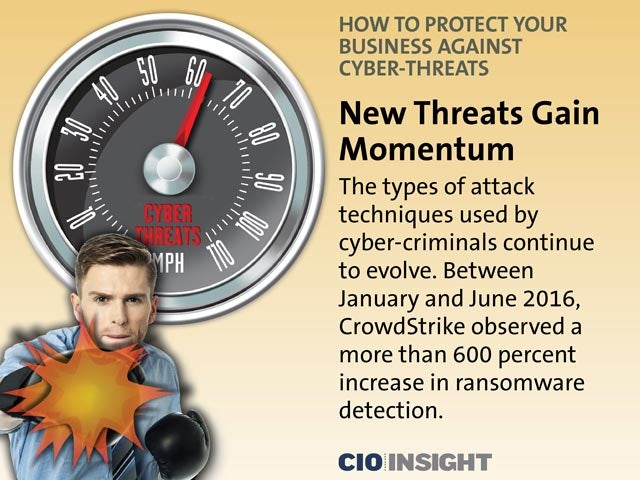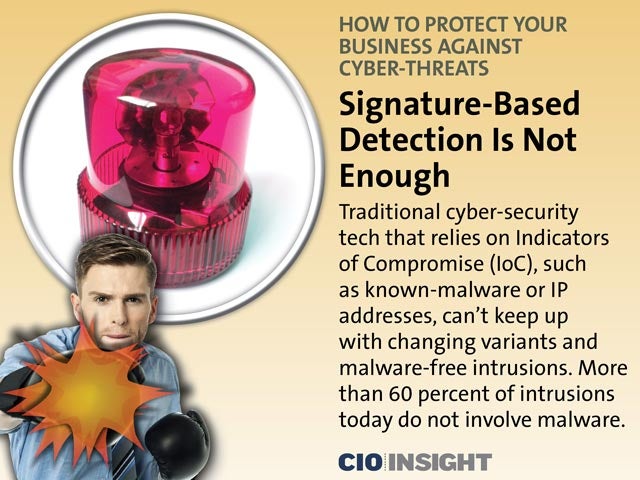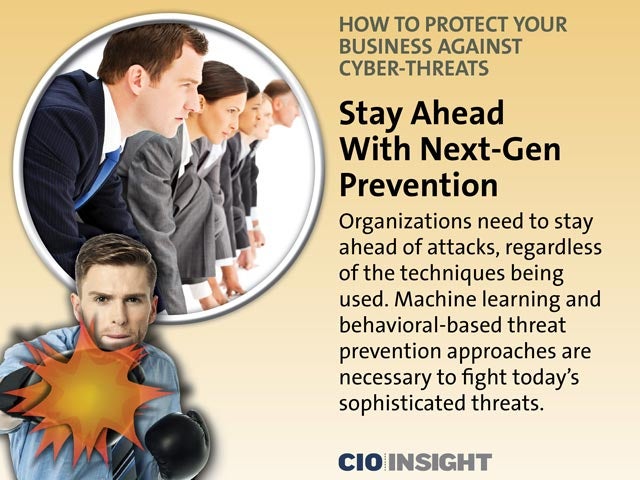
How to Protect Your Business Against Cyber-Threats
 How to Protect Your Business Against Cyber-Threats
How to Protect Your Business Against Cyber-Threats
By leveraging behavioral-based detection, machine learning prevention mechanisms and threat intelligence, a company can protect itself against cyber-threats.
 New Threats Gain Momentum
New Threats Gain Momentum
The types of attack techniques used by cyber-criminals continue to evolve. Between January and June 2016, CrowdStrike observed a more than 600 percent increase in ransomware detection.
 Attackers’ Motives Are Changing
Attackers’ Motives Are Changing
In 2016, cyber-criminals used information obtained from cyber-attacks to weaponize the information in order to embarrass targets or influence public perceptions.
 Signature-Based Detection Is Not Enough
Signature-Based Detection Is Not Enough
Traditional cyber-security tech that relies on Indicators of Compromise (IoC), such as known-malware or IP addresses, can’t keep up with changing variants and malware-free intrusions. More than 60 percent of intrusions today do not involve malware.
 A Proactive Approach Is Needed
A Proactive Approach Is Needed
IoC-based methods are a reactive approach to tracking intrusions. By the time an IoC is detected, the probability that the organization has been compromised is high. Instead, enterprises need to be able to prevent, detect and respond to both known and unknown attacks.
 Stay Ahead With Next-Gen Prevention
Stay Ahead With Next-Gen Prevention
Organizations need to stay ahead of attacks, regardless of the techniques being used. Machine learning and behavioral-based threat prevention approaches are necessary to fight today’s sophisticated threats.
 Integrate Threat Intelligence
Integrate Threat Intelligence
By integrating threat intelligence into detection and response, organizations can gain a better understanding of adversaries, their capabilities and intentions. As a result, enterprises can build stronger, more resilient defenses.
 The Power of Machine Learning
The Power of Machine Learning
Machine learning enables an organization to quickly analyze the breadth of data from its network, threat intelligence and other information, leading to faster identification of Indicators of Attack (IoA).
 Proactively Hunt in Your Environment
Proactively Hunt in Your Environment
Technology can serve as a proactive approach to cyber-security, but as long as people hack, individuals must remain behind security defenses. Skilled analysts hunting on the network give organizations an extra, human layer of protection.
 The Importance of Scalability
The Importance of Scalability
Organizations can’t wait for downtime to scale security to more users or update integrations. Security solutions and capabilities should scale easily. Cloud computing offers new architectural capabilities to help enterprises aggregate and marshal resources to shore up defenses.
 What to Expect in 2017 and Beyond
What to Expect in 2017 and Beyond
To stay ahead of technically astute hackers, organizations must shift their cyber-security approach to focus on proactive methods—including IoA, managed hunting teams, threat intelligence and machine learning—and unify these crucial elements.